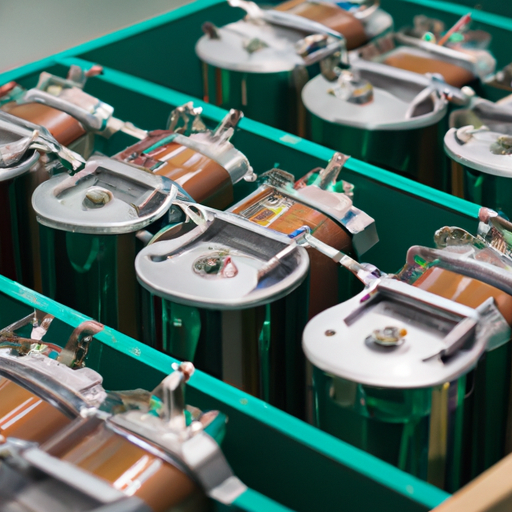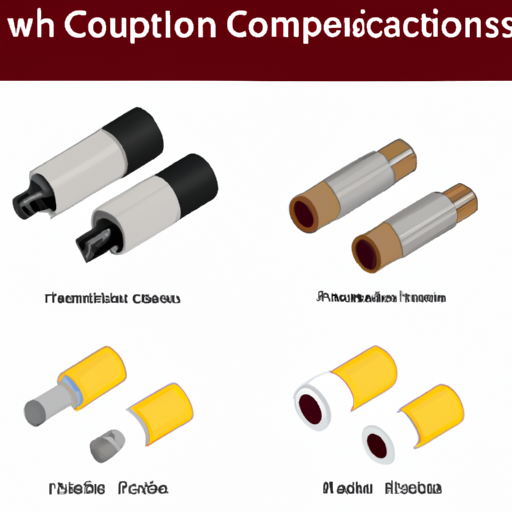What is the mainstream power capacitor production process?
What is the Mainstream Power Capacitor Production Process?
I. Introduction
A. Definition of Power Capacitors
Power capacitors are essential components in electrical systems, designed to store and release electrical energy. They play a crucial role in improving power factor, stabilizing voltage levels, and filtering out noise in electrical circuits. By temporarily storing energy, power capacitors help to ensure the smooth operation of electrical devices and systems.
B. Importance of Power Capacitors in Electrical Systems
In modern electrical systems, power capacitors are vital for enhancing efficiency and reliability. They are widely used in various applications, including power generation, transmission, and distribution, as well as in consumer electronics. Their ability to manage reactive power and improve power quality makes them indispensable in both industrial and residential settings.
C. Overview of the Production Process
The production of power capacitors involves a series of intricate steps, from material selection to assembly and testing. Understanding this process is essential for appreciating the complexity and precision required to manufacture high-quality capacitors that meet industry standards.
II. Types of Power Capacitors
A. Electrolytic Capacitors
Electrolytic capacitors are polarized capacitors that use an electrolyte as one of their plates. They are known for their high capacitance values and are commonly used in power supply applications.
B. Film Capacitors
Film capacitors utilize thin plastic films as dielectrics. They are non-polarized and offer excellent stability and low losses, making them suitable for high-frequency applications.
C. Ceramic Capacitors
Ceramic capacitors are made from ceramic materials and are widely used due to their small size and high reliability. They are often found in high-frequency applications and are available in various capacitance values.
D. Tantalum Capacitors
Tantalum capacitors are known for their high capacitance-to-volume ratio and stability. They are often used in applications where space is limited, such as in mobile devices and aerospace applications.
E. Comparison of Different Types
Each type of power capacitor has its unique advantages and disadvantages, making them suitable for specific applications. For instance, while electrolytic capacitors offer high capacitance, they may have higher leakage currents compared to film capacitors, which are more stable but typically have lower capacitance values.
III. Raw Materials Used in Power Capacitor Production
A. Dielectric Materials
1. Types of Dielectrics
The dielectric material is crucial for a capacitor's performance. Common dielectrics include aluminum oxide for electrolytic capacitors, polypropylene for film capacitors, and ceramic materials for ceramic capacitors.
2. Properties Required for Dielectrics
Dielectrics must possess high dielectric strength, low loss tangent, and stability over a range of temperatures and frequencies. These properties ensure that the capacitor can operate efficiently and reliably in various conditions.
B. Conductive Materials
1. Metals Used (Aluminum, Tantalum, etc.)
Conductive materials are essential for the plates of capacitors. Aluminum and tantalum are commonly used due to their excellent conductivity and corrosion resistance.
2. Conductive Coatings
In some capacitor designs, conductive coatings are applied to enhance conductivity and improve performance. These coatings can be made from various materials, including silver and copper.
C. Other Components
1. Insulating Materials
Insulating materials are used to prevent electrical leakage and ensure safety. Common insulating materials include epoxy resins and other polymers.
2. Packaging Materials
The packaging of capacitors is crucial for protecting them from environmental factors. Materials such as plastic and metal enclosures are commonly used to ensure durability and reliability.
IV. The Production Process
A. Design and Engineering
1. Specifications and Requirements
The production process begins with design and engineering, where specifications and requirements are established based on the intended application of the capacitor.
2. Prototyping
Prototyping is an essential step that allows manufacturers to test designs and make necessary adjustments before mass production.
B. Material Preparation
1. Sourcing and Quality Control
Sourcing high-quality raw materials is critical for ensuring the performance of the final product. Manufacturers often implement strict quality control measures to verify the integrity of materials.
2. Pre-processing of Materials
Pre-processing involves cutting, shaping, and treating materials to prepare them for assembly. This step is crucial for ensuring that all components fit together correctly.
C. Assembly Process
1. Layering of Dielectric and Conductive Materials
The assembly process begins with layering the dielectric and conductive materials. This step is vital for creating the capacitor's structure.
2. Winding and Stacking Techniques
Depending on the type of capacitor, different winding and stacking techniques are employed. For instance, electrolytic capacitors are often wound into cylindrical shapes, while film capacitors may be stacked in layers.
3. Encapsulation and Sealing
Once assembled, capacitors are encapsulated and sealed to protect them from environmental factors. This step is crucial for ensuring the longevity and reliability of the capacitor.
D. Testing and Quality Assurance
1. Electrical Testing
Electrical testing is conducted to verify the performance of the capacitors. This includes measuring capacitance, leakage current, and equivalent series resistance (ESR).
2. Environmental Testing
Environmental testing assesses how capacitors perform under various conditions, such as temperature and humidity extremes.
3. Reliability Testing
Reliability testing ensures that capacitors can withstand prolonged use without failure. This step is essential for maintaining quality standards.
V. Advanced Manufacturing Techniques
A. Automation in Production
Automation has revolutionized the production process, allowing for increased efficiency and precision. Automated systems can handle repetitive tasks, reducing the risk of human error.
B. Use of Computer-Aided Design (CAD)
Computer-Aided Design (CAD) software is widely used in the design phase, enabling engineers to create detailed models and simulations of capacitors before production.
C. Innovations in Material Science
Advancements in material science have led to the development of new dielectric and conductive materials, enhancing the performance and efficiency of capacitors.
D. Sustainable Manufacturing Practices
Sustainability is becoming increasingly important in manufacturing. Many companies are adopting eco-friendly practices, such as using recyclable materials and reducing waste.
VI. Challenges in Power Capacitor Production
A. Material Sourcing Issues
Sourcing high-quality materials can be challenging, especially with fluctuating prices and availability. Manufacturers must navigate these challenges to maintain production efficiency.
B. Quality Control Challenges
Ensuring consistent quality across production batches is a significant challenge. Manufacturers must implement rigorous quality control measures to address this issue.
C. Environmental Regulations
Compliance with environmental regulations can impact production processes. Manufacturers must stay informed about regulations and adapt their practices accordingly.
D. Market Demand Fluctuations
Market demand for power capacitors can fluctuate, affecting production schedules and inventory management. Manufacturers must be agile in responding to changing market conditions.
VII. Future Trends in Power Capacitor Production
A. Emerging Technologies
Emerging technologies, such as nanotechnology and advanced composites, are expected to play a significant role in the future of power capacitor production, enhancing performance and efficiency.
B. Shift Towards Renewable Energy Applications
As the world shifts towards renewable energy sources, the demand for power capacitors in applications such as solar and wind energy is expected to grow.
C. Miniaturization and Increased Efficiency
The trend towards miniaturization in electronics is driving the development of smaller, more efficient capacitors that can meet the demands of modern devices.
D. Global Market Dynamics
Global market dynamics, including trade policies and economic conditions, will continue to influence the power capacitor industry, shaping production strategies and market opportunities.
VIII. Conclusion
A. Summary of the Production Process
The production of power capacitors is a complex process that involves multiple stages, from material selection to assembly and testing. Each step is critical for ensuring the quality and performance of the final product.
B. Importance of Continuous Improvement in Manufacturing
Continuous improvement in manufacturing processes is essential for meeting the evolving demands of the industry. Manufacturers must stay ahead of technological advancements and market trends to remain competitive.
C. Final Thoughts on the Future of Power Capacitors
As technology continues to advance, the future of power capacitors looks promising. With emerging technologies and a growing focus on sustainability, the industry is poised for significant growth and innovation.
IX. References
A. Academic Journals
- IEEE Transactions on Power Electronics
- Journal of Applied Physics
B. Industry Reports
- Market Research Reports on Capacitor Industry
- Global Capacitor Market Analysis
C. Manufacturer Guidelines
- Manufacturer Specifications and Guidelines
- Industry Best Practices
D. Relevant Standards and Regulations
- International Electrotechnical Commission (IEC) Standards
- Underwriters Laboratories (UL) Standards
This comprehensive overview of the mainstream power capacitor production process highlights the intricacies involved in manufacturing these essential components. By understanding the various stages and challenges, we can appreciate the importance of power capacitors in our electrical systems and their role in the future of technology.



